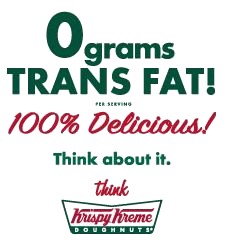

| Visitors Now: | |
| Total Visits: | |
| Total Stories: |

| Story Views | |
| Now: | |
| Last Hour: | |
| Last 24 Hours: | |
| Total: | |
Some thoughts on labels and certification
Read aguanomics http://www.aguanomics.com/ for the world’s best analysis of the politics and economics of water
 |
| But plenty of other fat! |
Labels, brands and certifications turn complex data into a simple conclusion.
Want to buy a good car? Get a Honda. Not sure how healthy the food is? Buy organic. Wondering if the cereal contains nuts? Read the label.
But labels, brands and certifications can also be misused or misleading.
How about the “safe” factory that burned down, “green” buildings that are not that green [LEED-fail], cars that are not that green or that fuel efficient, or ratings on financial instruments that are worthless or misleading?
There are other examples that should worry us, of labels and certifications for everything from dolphin-safe tuna that isn’t, on sustainable coffee that isn’t, or carbon offsets that do not.
We get these problems for the same reasons we like labeling in the first place: labels save us the effort of understanding a complex issue at the same time as they persuade us that we’re safe paying more for a product that we want. These two reasons clearly indicate why we get misleading labels. First, there’s the problem of mistakes, as when the people who certify or write the labels incorrectly summarize complex information (e.g., putting too much weight on creamy when you want salty). Second, there’s the problem of fraud, when people take short cuts or lie because they want to charge you more for a “certified” product without incurring the costs implied by that certification. They’re selling counterfeits.
Labels, brands and certification, in other words, do not work when the metrics are inaccurate or unavailable, and those problems are much greater for “green” certifications or labeling because most of those goods are difficult to understand, assess or experience. It’s easy to know if the burger weighs 100 grams but hard to know if it’s organic. It’s easy to see that the car gets 100km per 5 liters of fuel but hard to know if it emits half the CO2 of the last model — or if it’s put together by workers paid “fair” wages.
You see the problem. How can we address it?
First, I think that we should try to include as much information as possible in prices — the simplest metric of all — instead of labels and brands. That means that we don’t need to know the water footprint of a product if producers pay a price reflecting water scarcity. That means that we don’t have to trace a car’s carbon footprint if the price of fuel includes the cost of pollutants (or their removal).
Second, we need to have competition among brands and labels, so that third party judges (e.g., Consumers Union) can trace and confirm their claims and activities.
Third, certifiers and labelers need to guarantee their claims with bonds that they will lose if they are wrong (as I suggested with financial rating agencies).
Finally, caveat emptor! You, as a buyer, need to be careful that you are not swayed by the bias in online reviews or the false words of someone who doesn’t mind lying to you because they just “helped” the planet. Make sure that you complain — loudly and in public — when you run across false advertising, poor quality or anything else that you wished you’d known before you got a sour deal.
Bottom Line: Labels, brands and certificates are useful, but they can be inaccurate and abused. Producers should try to replace labels with accurate prices. Consumers should be skeptical of labels as a shortcut signal of quality. “Kosher” doesn’t always mean kosher.
2013-02-19 13:52:18
Source: http://www.aguanomics.com/2013/02/some-thoughts-on-labels-and.html
Source:


